Common name: tawny owl
Scientific name: Strix aluco
Family: Strigidae (owls)
Habitat: woodland, occasionally parks and gardens
Diet: small mammals, birds
Predators: occasionally goshawks
Origin: native
Hooting woodland hunter with silent wings. Without a sound, the tawny owl descends from its lofty perch to snatch unsuspecting rodents from the forest floor below.
Common name: tawny owl
Scientific name: Strix aluco
Family: Strigidae (owls)
Habitat: woodland, occasionally parks and gardens
Diet: small mammals, birds
Predators: occasionally goshawks
Origin: native
Tawny owls have classic owl features, with a rounded head, large dark eyes and a hooked beak. They have a compact, powerful build with brown-grey feathers and rounded wings. Typical wingspan is up to one metre.
Females typically weigh around 500g, which is roughly the same as a wood pigeon. Males are around 25% smaller.
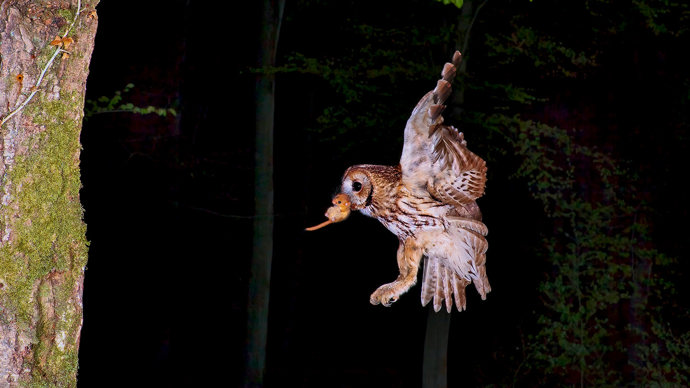
Credit: Dale Sutton / 2020VISION / naturepl.com
Mice and voles are the tawny owl’s main food source. These nocturnal hunters silently swoop down on their unsuspecting prey, plucking them from the forest floor. Sensitive sight and hearing allows owls to locate rodents, while their wing feathers have a soft furry edge that allows for soundless flight. They will take other prey on occasion, including birds, amphibians, young rabbits and even insects and worms when food is scarce.
Owls are famed for their eyesight, but their super-sensitive hearing is just as important for finding prey.
Tawny owls normally mate for life and a pair will defend their shared territory from other owls all year round. After mating, the female lays her eggs in a cavity within a large tree. Old crows' nests and squirrel dreys may also be used.
Typically, two to three eggs are laid in spring, hatching after around a month. Before fledging, the young, known as owlets, will leave the nest and spend several days in the surrounding branches – a process that is called ‘branching’. The parents will continue to care for the young for a few weeks after fledging, with the owlets fully independent by the end of autumn.
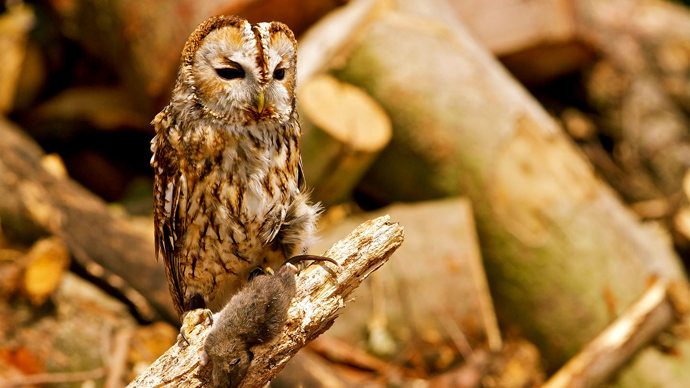
Credit: Tony Cox / WTML
Tawny owls can be found throughout the UK. Broadleaved woodland is their favoured habitat, but they may venture out into farmland when hunting. Tawny owls can sometimes be found in urban areas provided there is a sufficient number of large trees for roosting and breeding.
As nocturnal birds, tawny owls are more often heard than seen. Listen out for the characteristic 'hoo-hoo-hoo-hoo' call of the male and the shrill 'kew-wick' of the female in response. If you’re lucky, you may spot a roosting bird sleeping in a tree during the day. Pellets containing the remains of an owl’s food are a tell-tale sign that a roosting site is nearby.
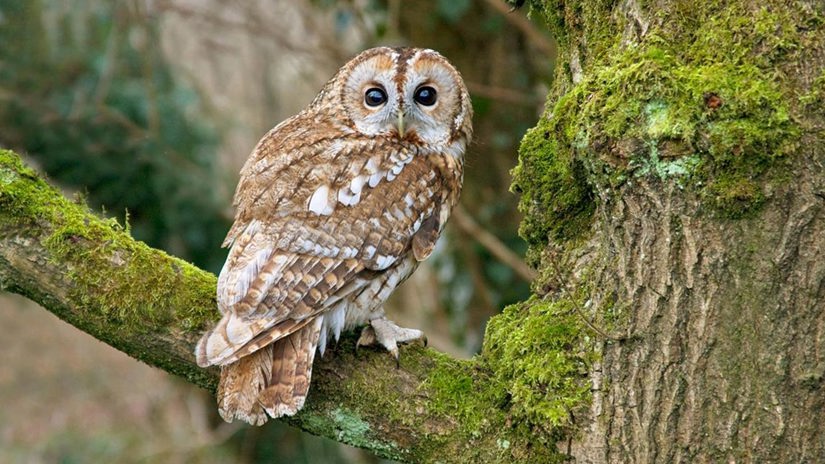
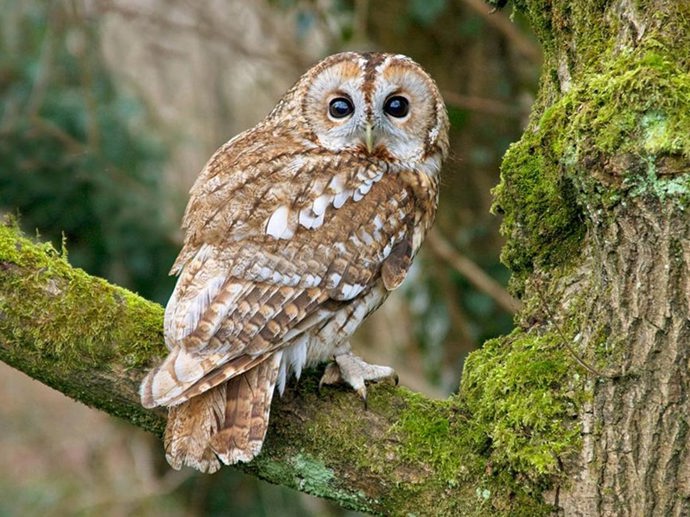
Charlotte Varela • 21 Dec 2023
Heard a screech in the night or a hoot in the woods? One of the UK's five resident owl species could be at large. Learn how to identify owl calls, from tawny owl to barn owl.
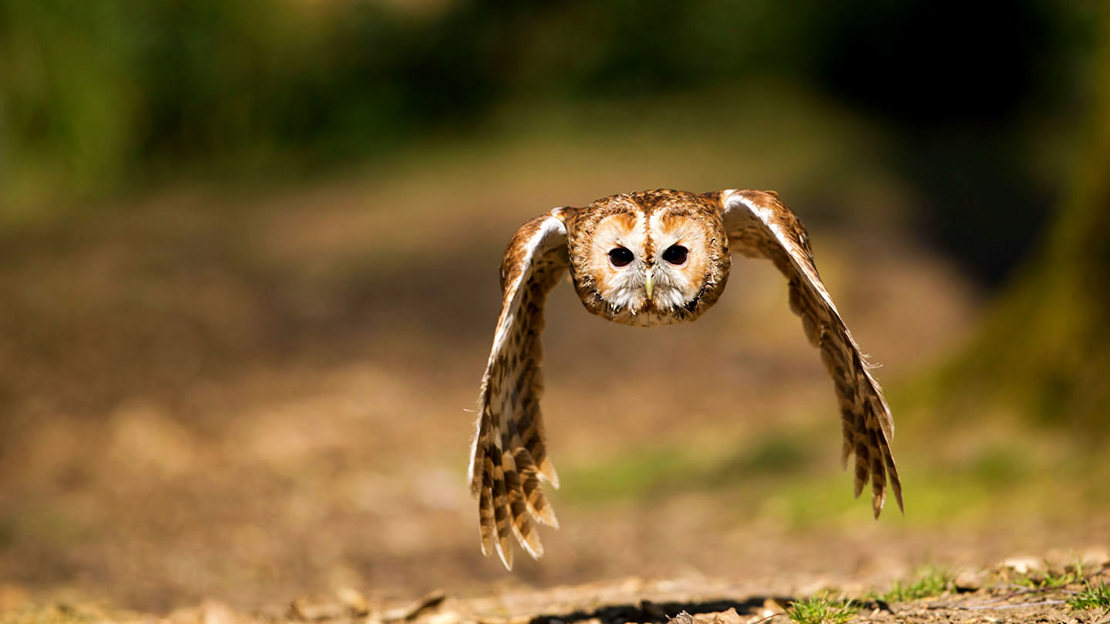
The male tawny’s call is easy to imitate and owls will often respond to impersonators.
The UK’s tawny owl population is estimated to have fallen by more than a third since the 1970s. Exactly why the species is declining is unclear, but a loss of woodland habitat and suitable trees for nesting are likely factors.